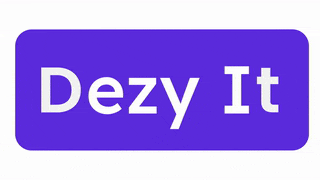How AI-Powered Patient Triage is Reducing ER Wait Times
- sia699
- Feb 18
- 2 min read
Updated: Mar 27

Emergency rooms (ERs) worldwide face the challenge of overcrowding, leading to long wait times and delays in critical care. Patients with non-life-threatening conditions often wait hours before seeing a doctor, while those in urgent need require immediate attention. AI-powered patient triage is transforming ER operations by prioritizing cases more efficiently, reducing bottlenecks, and improving overall patient flow.
The Problem of ER Overcrowding
ERs receive patients with varying levels of urgency, from minor injuries to life-threatening emergencies. Traditional triage methods rely on human judgment, which, while effective, can be time-consuming and inconsistent. With increasing patient volumes, hospitals struggle to assess and prioritize cases quickly, often leading to inefficiencies, frustration, and, in some cases, worsened patient outcomes.
How AI-Powered Triage Works
AI-driven triage systems analyze patient symptoms, medical history, and vital signs in real-time. By leveraging machine learning and natural language processing, these systems can:
Assess Patient Severity: AI can quickly determine the urgency of a case, ensuring critical patients receive immediate care.
Guide Patients to the Right Care Pathway: Some patients may be better served by urgent care centers or telemedicine consultations rather than the ER.
Reduce Administrative Burden: AI automates initial assessments, allowing medical staff to focus on delivering care rather than gathering information.
Key Benefits of AI-Powered ER Triage
1. Faster Patient Assessments
Traditional triage can take several minutes per patient, but AI systems process information in seconds, helping staff make quicker decisions. This speeds up the overall patient flow and reduces congestion.
2. Improved Accuracy and Consistency
AI eliminates variations in human judgment, ensuring that triage decisions are based on standardized medical protocols and vast datasets rather than subjective assessments.
3. Reduced Wait Times for Critical Cases
By quickly identifying high-priority cases, AI-powered triage ensures that those needing urgent care receive attention without unnecessary delays.
4. Optimized Resource Allocation
Hospitals can deploy staff and medical resources more effectively when AI provides real-time insights into patient needs and expected care demand.
5. Enhanced Patient Experience
Long ER wait times often lead to dissatisfaction and anxiety. AI triage systems provide patients with real-time updates and expected wait times, improving transparency and communication.
Real-World Applications
Several hospitals are already using AI-powered triage tools to improve efficiency. AI-driven chatbots and virtual assistants collect patient symptoms before they even arrive at the ER, helping hospitals prepare in advance. Some systems integrate with wearable devices to track vitals, offering real-time data for better decision-making.
The Future of AI in ER Triage
As AI continues to advance, triage systems will become even more precise, integrating predictive analytics to anticipate surges in patient volumes. AI-powered tools may also expand beyond ERs to support primary care and home-based health monitoring, reducing the overall strain on emergency services.
Conclusion
AI-powered triage is revolutionizing emergency care by improving efficiency, reducing wait times, and ensuring that patients receive timely treatment. As healthcare systems adopt these innovations, ERs will become more effective in managing patient flow and providing better care outcomes.
Learn more:


Comments